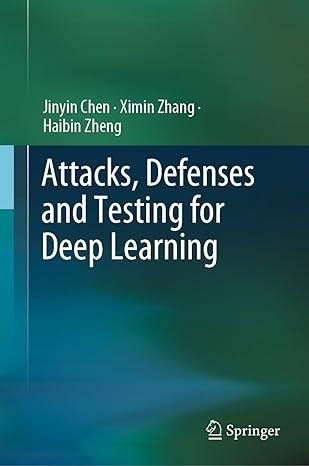Exploring "Attacks, Defenses, and Testing for Deep Learning" by Jinyin Chen
The rapid advancement of deep learning has transformed numerous industries, bringing forth innovations in artificial intelligence (AI) and machine learning (ML). However, as these technologies become more integrated into critical systems, they also face growing threats from adversarial attacks. In "Attacks, Defenses, and Testing for Deep Learning," author Jinyin Chen provides an in-depth exploration of the vulnerabilities inherent in deep learning models and offers robust strategies for defense and testing.
Understanding Adversarial Attacks
Adversarial attacks are attempts to deceive deep learning models by feeding them maliciously crafted inputs. These inputs are often imperceptible to the human eye but can cause models to make significant errors. Chen categorizes these attacks into several types, including:
- Evasion Attacks: Here, the adversary modifies the input data to fool the model during its operational phase. For instance, slight alterations to an image can cause a model to misclassify it.
- Poisoning Attacks: These involve contaminating the training data, leading to the creation of a compromised model. This can result in a model that behaves correctly most of the time but fails under specific, adversary-chosen circumstances.
- Model Inversion Attacks: In this scenario, attackers aim to reconstruct the input data from the model's outputs, potentially exposing sensitive information.
Chen emphasizes the importance of understanding these attacks to develop effective defenses. By dissecting the mechanics of adversarial techniques, readers gain a comprehensive understanding of the threats that deep learning models face.
Defensive Strategies
Chen's book doesn't just stop at identifying threats; it delves deeply into various defensive mechanisms to safeguard deep learning models. Some of the key defensive strategies discussed include:
- Adversarial Training: This approach involves training models on a mixture of original and adversarial examples. By exposing the model to potential attacks during the training phase, it becomes more robust against similar threats during deployment.
- Defensive Distillation: A technique where a model is trained to output softer, probabilistic labels instead of hard classifications. This makes it harder for attackers to craft adversarial examples that can fool the model.
- Gradient Masking: This method seeks to obscure the gradient information used by attackers to generate adversarial examples. However, Chen also discusses the limitations of this approach, noting that it can sometimes lead to a false sense of security.
- Feature Squeezing: By reducing the complexity of the input data (e.g., reducing color bit-depth in images), feature squeezing can help in detecting and mitigating adversarial inputs.
Testing Deep Learning Models
Testing is a critical component of ensuring the robustness of deep learning models. Chen's book explores various testing methodologies designed to identify vulnerabilities and validate the effectiveness of defenses. These methodologies include:
- White-Box Testing: In this approach, the tester has full access to the model's architecture and parameters. This allows for a thorough examination of the model's weaknesses and the effectiveness of implemented defenses.
- Black-Box Testing: Here, the tester has no knowledge of the model's internals and interacts with it only through inputs and outputs. This method simulates real-world attack scenarios where the adversary has limited information about the model.
- Red Teaming: This involves a group of testers (the red team) who actively attempt to compromise the model using various attack techniques. Red teaming helps in uncovering unforeseen vulnerabilities and provides a realistic assessment of the model's security posture.
- Coverage-Guided Testing: By analyzing the coverage of different parts of the model's logic during testing, this approach ensures that a wide range of scenarios and edge cases are evaluated.
Case Studies and Practical Applications
Chen enriches the theoretical concepts with practical case studies, demonstrating how these attacks and defenses play out in real-world scenarios. For instance, the book explores adversarial attacks on image recognition systems used in autonomous vehicles, highlighting the potential consequences of successful attacks. Through these case studies, readers can see the practical implications of the discussed strategies and the importance of rigorous testing.
The Future of Deep Learning Security
Looking forward, Chen discusses emerging trends and future directions in deep learning security. As deep learning models continue to evolve, so too will the techniques used by adversaries. Chen emphasizes the need for continuous research and adaptation of defensive measures to stay ahead of potential threats. Additionally, the book explores the role of regulatory frameworks and industry standards in enhancing the security of AI systems.
"Attacks, Defenses, and Testing for Deep Learning" by Jinyin Chen is a crucial resource for anyone involved in the development and deployment of deep learning models. By providing a comprehensive overview of the threats, defenses, and testing methodologies, Chen equips readers with the knowledge needed to protect their AI systems against adversarial attacks. Available in EPUB format, this book is accessible to a wide audience, making it an invaluable addition to the field of deep learning security.
For practitioners, researchers, and enthusiasts alike, Chen’s work serves as both a primer and a detailed guide on the complex landscape of deep learning security. Whether you are just starting out or are a seasoned professional, this book offers valuable insights that can help you navigate and mitigate the risks associated with deep learning technologies.
